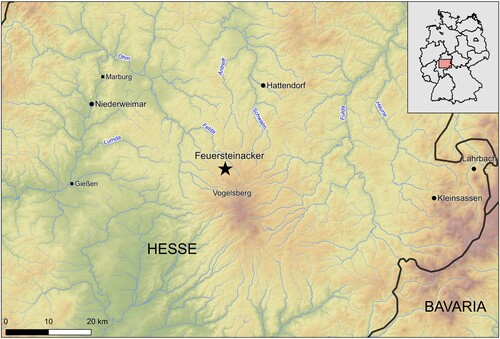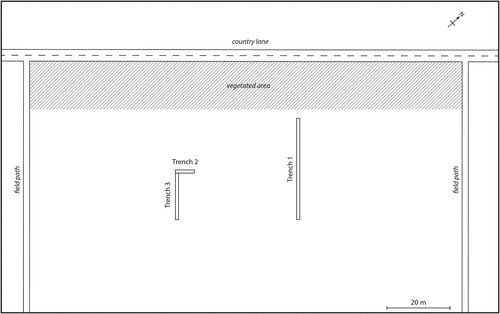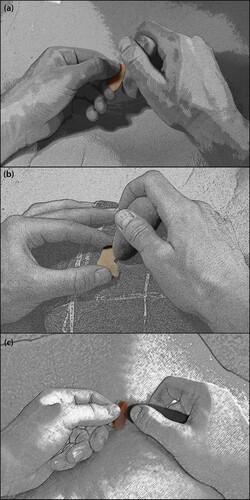Figures & data
Figure 3. Internal distribution of artifacts within the trenches. (a) Horizontal distribution. (b) Vertical distribution. (Figure: T. Hess).

Figure 4. Origin of different raw materials in combination with Early Mesolithic sites. (1) Niederweimar. (2) Hattendorf. (3) Lahrbach. (4) Kleinsassen. (5) Rüsselsheim-Waldhaus. (6) Sulzdorf-Hoher Stein (Figure: T. Hess).
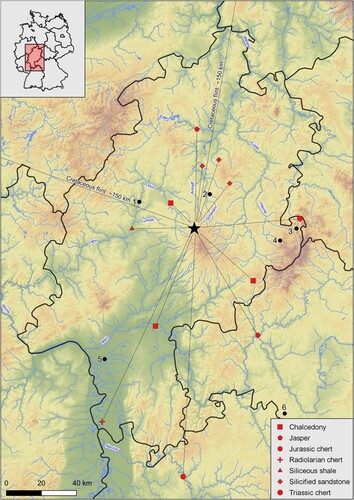
Table 1. Importance of different raw material types by number and weight (n = 1192).
Figure 5. Comparison of the proportions of different raw materials between stratified artifacts from the excavation by W. Taute (n = 1192) and the surface finds collected by H. Quehl until 2017 (I = 8089).
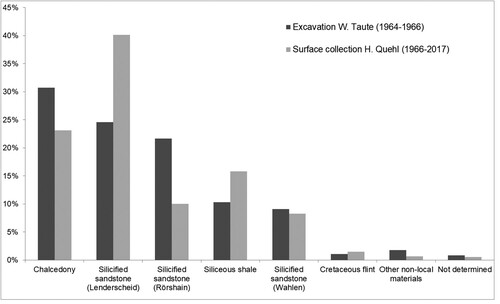
Table 2. Raw material used for the production of microliths (n = 76).
Table 3. Overview over the lithic assemblage (n = 1192).
Figure 6. Different core types. (a, b) Cores with centripetal negatives. (c) Core with two striking platforms. (d, e) Cores with multidirectional negatives. (f) Core with two striking platforms and a trapezoidal cross-section. (Drawings: L. Hilmar).
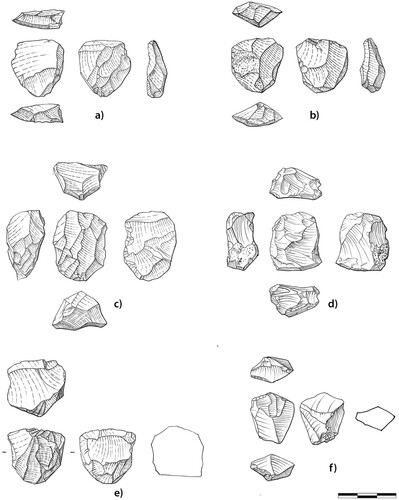
Figure 7. Microliths, microburins, and laminar blanks discovered at the site (Photographs: R. Johansen & T. Hess).
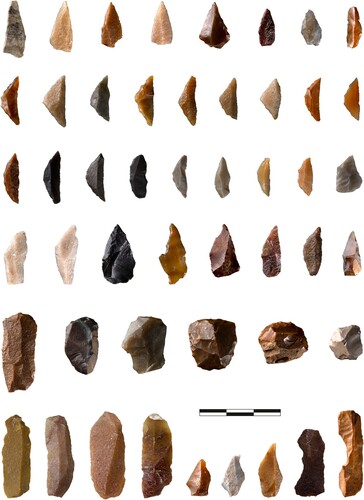
Figure 8. Ideal reduction sequence for the production of crescents, isosceles triangles, and microliths with oblique truncation (Drawings and photographs: T. Hess).
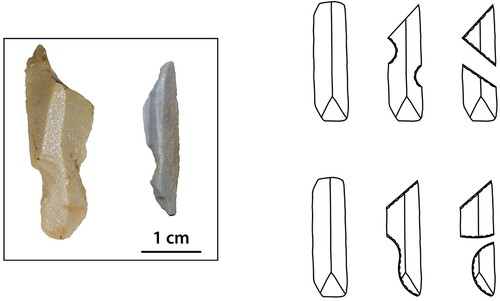
Table 4. Different microliths within the assemblage (n = 76).
Table 5. Metric attributes of complete microliths (n = 58) and complete laminar blanks (n = 86) (measurements in mm).
Data availability statement
The data that support the findings of this study are available from the corresponding author, [T. H.], upon reasonable request.

